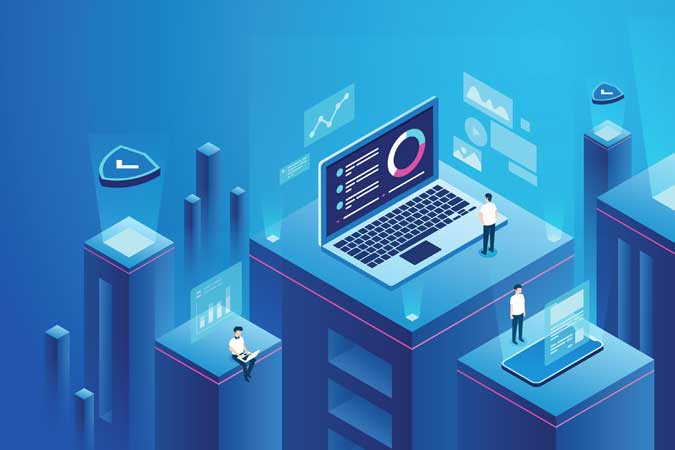In the digital innovation landscape, the Philippines stands at a road filled with stark irony: on one hand, some 73 million Filipinos are Internet users, with the World Bank noting that the Philippines is seen as a “potentially significant player” in the global digital market. On the other hand, the country is seemingly running aground when it comes to internet penetration.
According to the recent Digital 2021 Report from We Are Social, around 37 million Filipinos are still not online. At the same time, however, the Digital 2021 Report also noted that Filipinos top the daily usage charts, spending an average of nine hours and 45 minutes per day online. Filipinos are also the most active on social media averaging three hours and 53 minutes on social media every day.
A nation with millions of active Internet and social media users, but also a nation running aground when it comes to internet penetration. What went wrong? A cursory review of the past year will show that an important constraint which the Duterte administration sought to resolve was the bureaucratic delay in the processing of telecommunications towers by both the national and local governments. No less than the President himself ordered the whittling down of the number of days and signatures for the approval of tower applications.
However, the path towards full digital transformation is still far and long. The number of unconnected Filipinos is worrisome given our quick and unexpected shift towards digital brought about the COVID-19 (coronavirus disease 2019) pandemic. Reliable and effective online services are so much more essential now that our mobility is limited. Ask any regular Filipino Internet user, or scrounge around social media, and it would be easy to see the frustration of our countrymen on the Philippine Internet’s state of affairs.
The pandemic opened a deep rabbit hole which exposed the need — yet lack of — stable and reliable e-government services. These services have not yet been fully integrated nor intuitive to public needs. As an example, the driver’s license databases are not fully integrated with vehicle information and other databases, such that traffic management cannot implement an efficient and immediate contactless apprehension system. The current contactless apprehension setup takes at least several months to more than a year to collect fines from traffic violators.
For the most part, the Philippines has mostly been a consumer of IT (information technology), instead of trailblazing innovation and technology in this field. Our investment in AI (artificial intelligence) is limited to financial and other business-to-business services, and we have yet to see Filipino tech companies emerging, if not dominating in this field. However, there is a bright spot in the financial technology sector with the new round of investments in GCash by foreign investors, as the current valuation may raise the company to the level of one of Southeast Asia’s valuation unicorns, those with market valuations of more than $1 billion. This may serve as the first push that the country needs in further developing our know-how and putting the country on a world stage.
The role of the government in tech is to encourage growth and raise the level of domestic and foreign investments in the sector. This means defining the role of tech in national development: remove bureaucratic roadblocks and allow the sector a wide latitude to innovate. Government financial institutions can even set aside investment funding to support nascent domestic tech initiatives, for as long as there is a clear proof of concept and plan of growth.
One key area where the government can practice this is in finding solutions on how Internet coverage can be expanded even in the remotest sections of the archipelago. Many areas, especially in rural parts of the country, are underserved or completely unserved by the country’s commercial Internet Service Providers (ISPs), leaving millions disconnected from digital services and opportunities.
There are developing technologies, like Starlink’s use of thousands of internet-beaming satellites floating in Earth’s low orbit, which could bridge the wide connectivity gap in many of our islands where enabling infrastructure has yet to be built. One big asterisk, however, is the cost, with these new technologies currently costing current pilot customers almost tens of thousands of pesos per month in Internet subscription. This is above and beyond what regular broadband subscribers in Metro Manila pay. A proven strategy of many countries is for the government itself to invest in the enabling infrastructure that it’s people are desperately in need of.
Such investments can be tapped for use in public services, such as integrating it with the implementation of Republic Act No. 10929 or the Free Public Wi-Fi Law, so our countrymen in far-flung islands and communities can potentially benefit from the expanded Internet coverage without shouldering the heavy costs.
As a nation, we are barely keeping afloat in the wide ocean of digital innovation. We need government support, openness, and keen interest to innovate if we want to make our mark. Just this Feb. 9, the Philippines commemorated the “Safer Internet Day for Children” under Presidential Proclamation No. 417. But while such red-letter days may seem to be a step in the right direction, what we need m¥ore of are laws, policies, and government actions that provide concrete platforms for speedier digital innovation.
Terry Ridon is a Non-Resident Fellow of the Stratbase ADR Institute and Convenor of InfraWatch PH.

